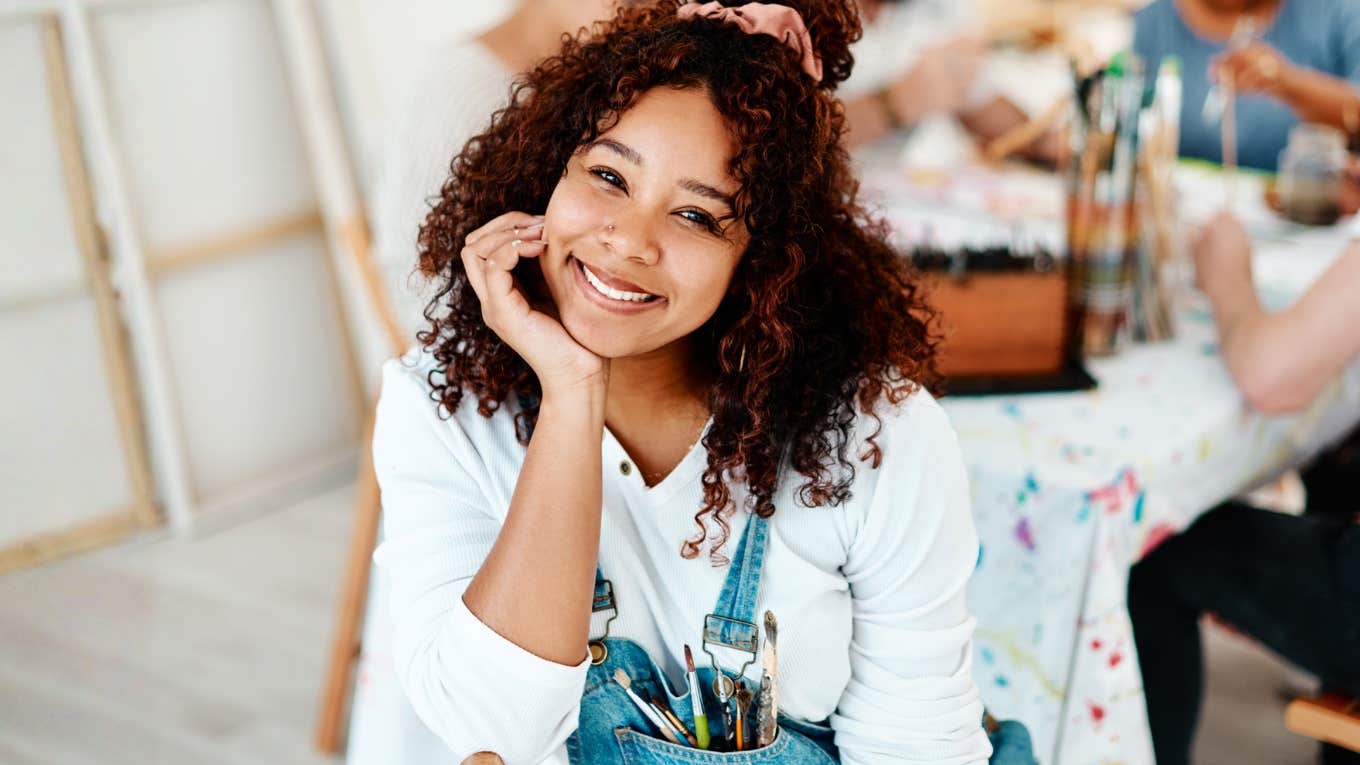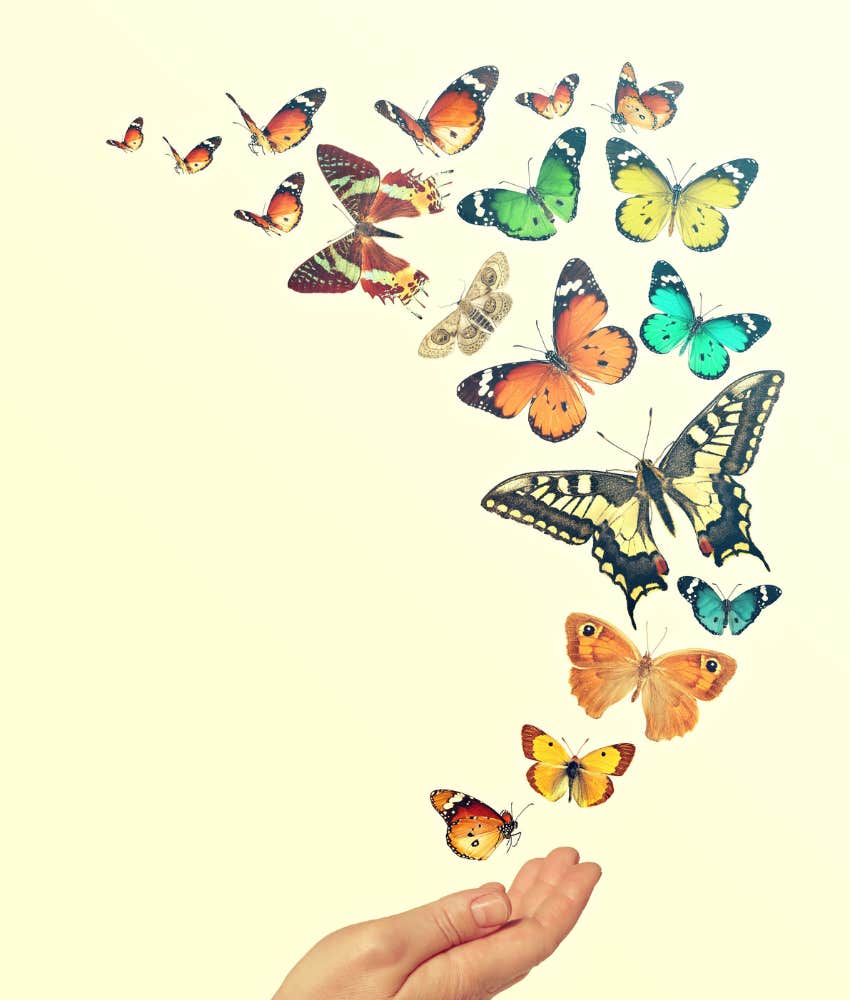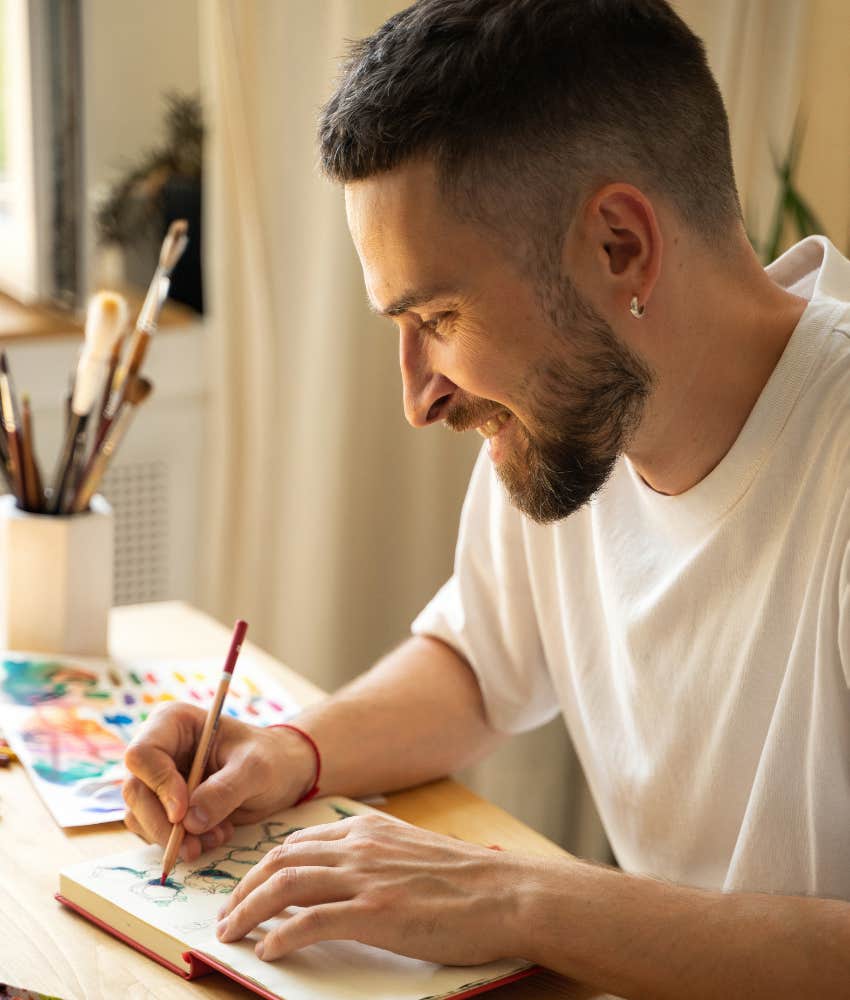People Who Do This Nostalgic Little Activity Have Much Calmer Minds, According To Research
Make time for this childhood pastime, and you'll have lower stress levels.
 Peopleimages.com - YuriArcurs | Canva
Peopleimages.com - YuriArcurs | Canva One of the most fun things to do when you're babysitting or hanging out with your own children is to color with them. You can work on one picture together, or each of you can have your own picture. And now, adults are coloring on their own with coloring books specifically marketed to them.
Adult coloring books are extremely popular. Illustrator Johanna Basford's coloring book, Secret Garden, was a global best-seller, as were her books Enchanted Forest and Lost Ocean. One reason these books are so popular is that they offer a break from looking at computers and other devices.
"People are really excited to do something analog and creative, at a time when we're all so overwhelmed by screens and the Internet," Basford said in an NPR interview. Basford's fans are encouraged to post their completed works on her website.
One of the first psychologists to apply coloring as a relaxation technique was Carl G. Jüng in the early 20th century. He did this through mandalas (circular designs with concentric shapes similar to the Gothic churches' rose windows).
Research found that people who color in coloring books have much calmer minds.
 Protasov AN via Shutterstock
Protasov AN via Shutterstock
When we color, we activate different areas in our two cerebral hemispheres, says psychologist Gloria Martinez Ayala.
"The action involves both logic, by which we color forms, and creativity, when mixing and matching colors. This incorporates the areas of the cerebral cortex involved in vision and fine motor skills. The relaxation that it provides lowers the activity of the amygdala, a basic part of our brain involved in controlling emotion that is affected by stress," Martinez Ayala told The Huffington Post.
One study examined a method of decreasing anxiety called Coloring Therapy, which combined elements of art therapy and meditation.
The basic idea of coloring therapy is that when individuals color complex geometric forms, they're allowed to suspend their inner dialogue and deeply engage in an activity that removes them from the flow of negative thoughts and emotions that can take over their lives.
A total of 84 college students participated in the study and took a test to measure their baseline anxiety levels. They then upped those levels by writing about frightening experiences. The participants were randomly assigned to color a blank page, a plaid design, or a mandala.
The researchers found that those who colored the plaid or mandala patterns reduced the level of their anxiety, while those who colored a blank page did not.
"There's something about the mandala that is particularly soothing for people," said Lacy Mucklow, an art therapist and author of multiple coloring books, in an interview with USA Today. These books contain mandalas and other geometric patterns, but also nature scenes of babies and cute animals.
 Garnar via Shutterstock
Garnar via Shutterstock
Coloring can bring us back to a simpler time.
Coloring can remind us of the easier and happier times of childhood. A time when we didn't have as many responsibilities, and could do something because it was fun. To be able to tap into that time of your life is very cathartic and enjoyable.
Geometric designs, animals, and gardens may not be what interests you. If you have a more dystopian point of view, you might enjoy Patrick McGilligan's Lethargic Artist Coloring Book, which was called "the visual equivalent of a Charles Bukowski novel."
Adult coloring books are beneficial in many ways: they can be therapeutic, relaxing, calming, problem-solving, and can lower your anxiety. No matter what you're looking for in an adult coloring book, you're sure to find it.
And don't worry about coloring inside the lines — it's not about precision, it's about chilling out and having fun.
Christine Schoenwald is a writer, performer, and frequent contributor to YourTango. She's had articles featured in The Los Angeles Times, Salon, Bustle, Medium, Huffington Post, Business Insider, and Woman's Day, among many others.

